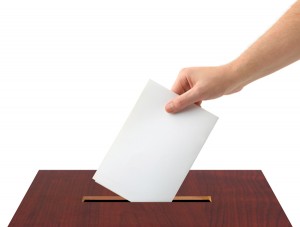Who wants higher taxes? In at least 13 Arkansas communities, the answer Sept. 19 was, “We’ll pay them, for our local schools.”
That’s how many school districts voted to increase property taxes during the annual school elections. Voters chose to erase all or much of the tax cuts provided by Gov. Asa Hutchinson and the Legislature during the past two legislative sessions. Meanwhile, voters in eight districts said no to millage increases.
The increases occurred in communities across the state, from Berryville in the state’s northwest corner to Dumas in southeastern Arkansas. The largest increase was 8.4 mills at the Cutter Morning Star district around Hot Springs for a new high school and arena. Fifty-nine percent of voters approved raising their taxes by $168 a year on a $100,000 home. In DeQueen, 61 percent said yes to a 4.9-mill increase to replace the crowded high school. The 50-year-old building was designed for 60-80 students per grade; they’ve since grown to about 200. The district, which is 63 percent Hispanic, had the state’s lowest millage rate before the vote.
Overwhelming support
Most striking was how easily the tax increases passed. Marked Tree’s 6-mill request to replace 70-year-old wings at its high school and elementary campuses passed 370-56. That’s 87 percent voting yes. Eighty percent of Dumas voters approved a 3-mill increase that will raise teacher salaries by $1,500 to $1,800. Millage increases passed with 80 percent support in Lamar, 77 percent in Malvern, 73 percent in Clarendon, 72 percent in Jackson County, 67 percent in Perryville, and 57 percent in Magnolia. The closest vote was Berryville’s 4.45-mill increase for a new high school and other buildings. It passed with more than 54 percent of the vote.
State dollars, September elections
One factor in most of the elections was the state partnership funding that has provided $1.1 billion for school facilities since 2006. That money is available to selected school districts temporarily and must be paired with local funds, which incentivizes voters to say yes. Moreover, Hutchinson in July said the state no longer can afford to continue committing $100 million a year to school facilities. That meant schools, and their voters, knew they’d better grab the money while they can.
Another factor: The millage votes occurred during the annual September school elections. Those elections are regularly scheduled, but many voters aren’t paying close attention then, so turnout is lower and more likely to include a higher percentage of school supporters and employees. Under legislation passed this year, school elections starting next year will occur in either May or November alongside other elections. However, districts still can hold tax elections at other times.
Eight millage increases failed. In Heber Springs, a 3.6-mill request that would have increased teacher and staff salaries and benefits by $4,000 lost, 549-1,072. Voters in Valley Springs, Vilonia, Greene County Tech, Star City, Ashdown and Bauxite likewise said no. Harrisburg voters again refused to raise their millage rate to equal that of their neighbors in Weiner, whose high-performing small school was consolidated into the Harrisburg district in 2010.
Why yes?
Still, 11 tax increases out of 19 is notable, and not inconsistent with previous years’ results. Moreover, Arkansas voters five years ago voted to raise the state sales tax by half a cent for highways.
Does that mean voters are eager to raise their own taxes? Hardly. But majorities (of those who vote, anyway) are apparently persuadable given the right circumstances. School and highway taxes fund core government functions that directly and visibly benefit the voters. After all, they drive across those roads and send their children to those schools.
Whenever possible, government should feel like other parts of the economy: If you want the service, you pay for it, and if you want more, you pay more. Given that choice, Arkansans in 11 school districts said yes – the ones who voted, anyway, and in a democracy, that’s all that matters.
© 2017 by Steve Brawner Communications, Inc.
